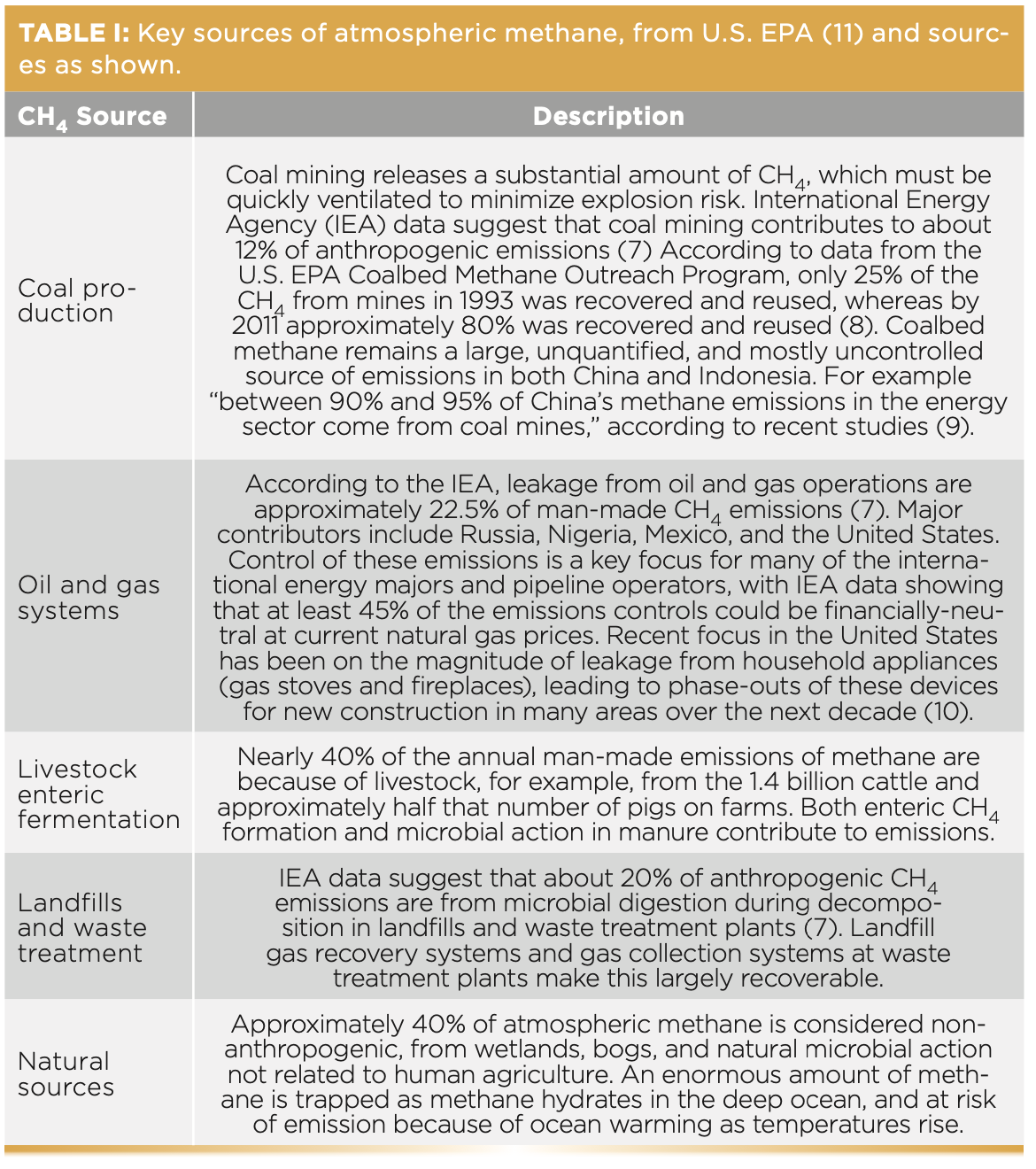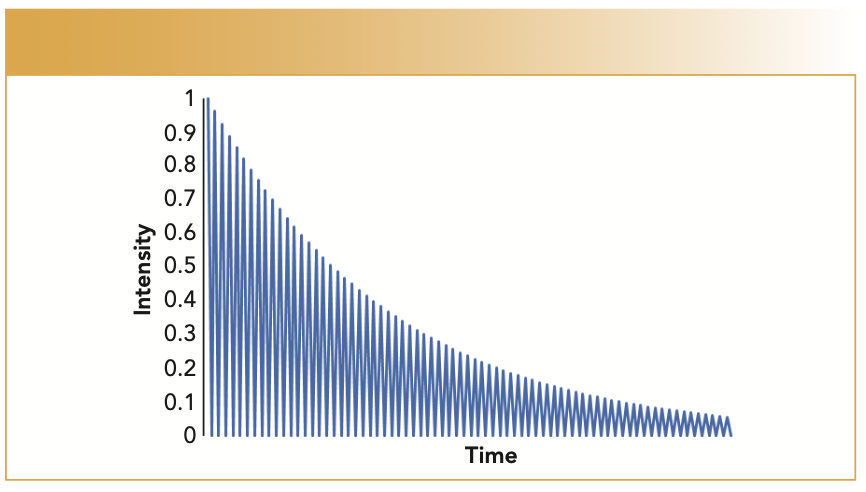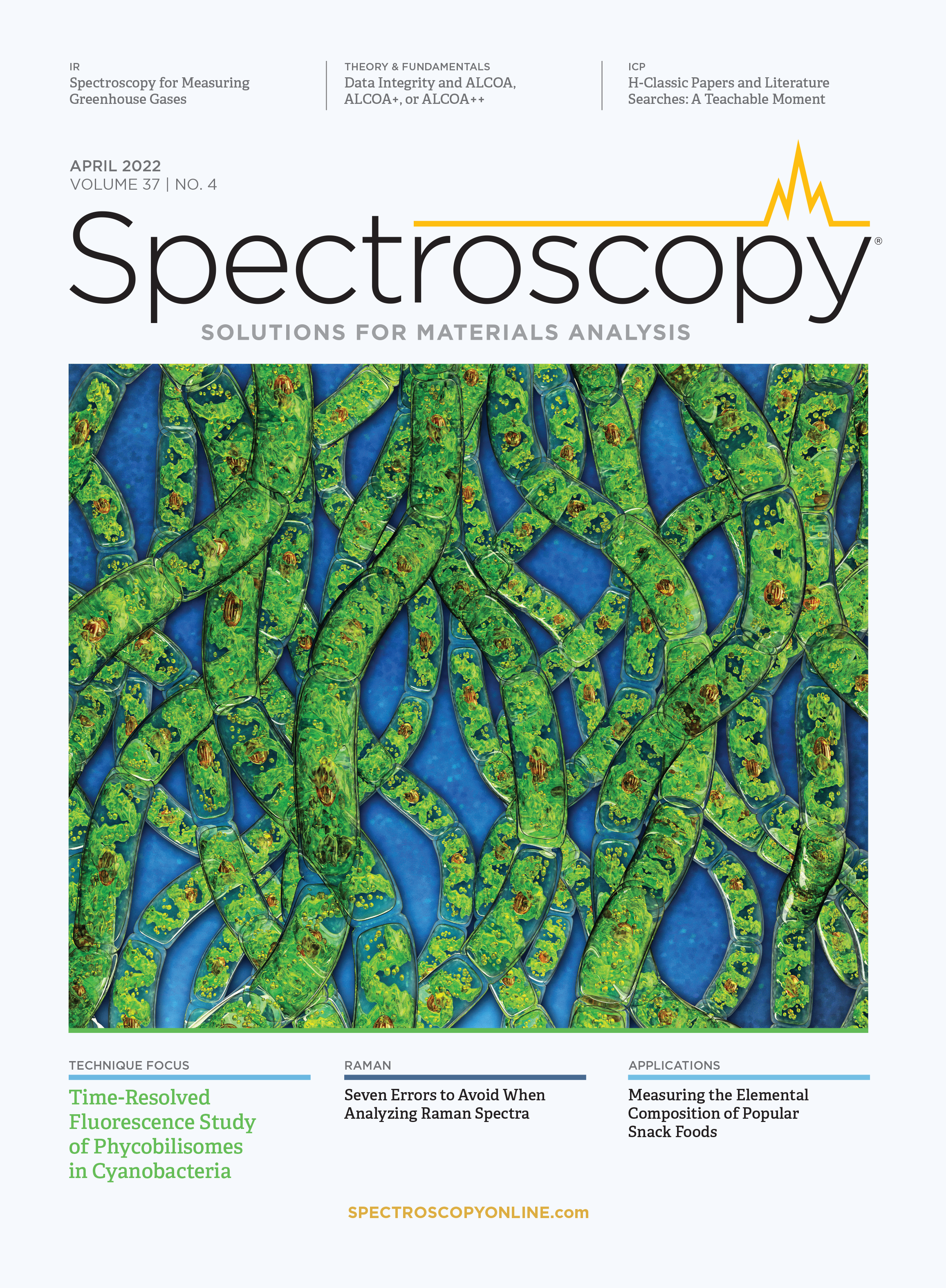Detecting Methane Emissions: How Spectroscopy is Contributing to Sustainability Efforts
Evidence and sentiment are both aligned towards the necessity of reducing the impact of greenhouse gases on climate. Although global CO2 emissions are relatively easy to assess because of their linear relationship with carbon-based fuel combustion, methane (CH4) is relatively difficult to measure because of the diversity of methane sources. Because it has over 25 times the potency of CO2 as a greenhouse gas and a much shorter atmospheric lifetime, controlling CH4 is one of the highest-impact ways to reduce climate impacts. Here, we look at the evidence and some of the ways spectroscopy is essential in this fight.
The recent international climate meeting, “Conference of the Parties 26” (COP26) that occurred in Glasgow, Scotland, in the fall of 2021 both highlighted the dangers associated with climate change and solidified the will for immediate action to reduce greenhouse gases. In the 30 years since the initial United Nations Framework Convention on Climate Change, substantial new evidence has been collected that documents the deleterious effects of greenhouse gas emissions on climate and the Earth’s ecosystem, and investments in renewable energy technology have been implemented to accelerate the transition to low carbon intensity and carbon-free energy sources. These two factors have moved public sentiment toward action while facilitating the possibility of reducing greenhouse gas emissions without an enormous drop in global productivity and standard of living that would be inevitable if low-carbon energy sources were not inexpensively available.
The result of these two factors is that the time for action is now. Many industries recognize the need for prioritizing developing technologies to combat climate change and are broadly aligned on this goal.
It has long been known that methane (CH4) is a much more potent greenhouse gas than carbon dioxide (CO2). Although CO2 is significantly higher in atmospheric concentration at 418 parts per million (ppm) (1) than CH4 (nearly 1.9 ppm) (2), the CO2 absorption bands in the atmosphere are saturated, meaning that rising CO2 concentration influences absorption only on the wings of the absorption bands, while the CH4 bands are not saturated. As a result, rising CH4 concentration is much more impactful on warming. It is estimated that global CH4 concentrations are 2.5 times higher than in preindustrial periods (3), compared with a roughly 150% increase in CO2 levels from peaks in preindustrial times of approximately 280 ppm to present-day values.
CH4 has a relatively short lifetime in the atmosphere, accounting for approximately 30% of the atmospheric reactions with the hydroxyl radical (OH) (4), which itself drives most of the reactions in Earth’s troposphere. During its oxidative breakdown, CH4 contributes substantially to tropospheric ozone (O3) production through the formation of NO2 by HO2 and CH3O2. NO2 is photolyzed into NO + O, and the oxygen radical reacts with O2 to form O3. This NO2 pathway forms essentially the only source of tropospheric ozone (4), which itself is a potent greenhouse gas. The IPCC’s 5th Assessment report in 2013 assigned CH4 nearly 60% the potency of CO2 for radiative forcing in the atmosphere (5). Because of its short lifetime, Inger Anderson, who is the executive director of the United Nations Environment Program, said “Cutting methane is the strongest lever we have to slow climate change over the next 25 years and complements necessary efforts to reduce carbon dioxide” (6).
Unlike CO2 emissions, which are easily localized and primarily from combustion-driven energy sources, CH4 emissions are dispersed geographically and from a variety of source types. For example, substantial amounts of gas-phase hydrocarbons are locked in underground reservoirs along with liquid and solid hydrocarbons. Although in many cases these reservoirs of gas are successfully captured, extraction of fossil fuels (both coal and oil) leads to emissions. Successful capture depends on successful measurement. Table I shows some of the most important global emissions sources of CH4.

Spectroscopic CH4 Measurement
CH4 has fundamental vibrational modes in the infrared (IR), with the main H-CH3 stretching modes approximately 3.4 μm and the H-CH3 deformation modes between 6.8–7.5 μm. Combination bands and the harmonics of these modes make the CH4 spectrum quite rich in the mid- and near-IR (NIR) regions. Although solid state electrochemical sensors are used in some situations for point monitoring applications, many, if not most, applications use some sort of spectroscopic measurement.
The simplest measurement scheme is nondispersive IR (NDIR), in which a broadband light source is directed onto a filtered photodiode or other detector. Gas in the path between the light source and the detector gener- ates an absorption signal, which can be used to quantify the gas. For CH4, the filter is typically in an interference-free region around 3.4 μm. NDIR gas sensors have been used for decades in air quality monitoring. Here, we focus on more complex sensors and evolving applications for local and global CH4 monitoring used to assess and control emissions for climate change.
Point and Mobile Monitors
Many of the methane concentration data series (for example, the global monitoring laboratory series maintained by the National Oceanic and Atmospheric Administration [NOAA]) rely on gas samples transported to the laboratory and measured using traditional, sensitive methods, such as gas chromatography (GC). However, these measurements are being supplemented by newer devices that can be used on-site and made portable. The most prevalent is the cavity ring-down spectrometer (CRDS), which is available from providers such as Picarro, Los Gatos Research (an ABB company), and Tiger Optics, among others.
In CRDS, pulsed light tuned to an absorption transition is directed through a gas cell containing the gas of interest. Highly reflective end mirrors in the cavity can yield pathlengths of at least 10 km quite easily. A small amount of light emitted from one end of the cavity is measured continuously. Trace gas absorption during roundtrips of the light in the cavity causes the light to diminish with each pass, as shown in Figure 1 and equation 1 (12):

FIGURE 1: Simulated CRDS trace, from which successive peaks are fit to a first-order exponential as described by equation 1. In practice, a ringdown decay will be thousands of peaks and may be averaged over multiple decays in a few seconds.

Here, the intensity as a function of time, I(t), is proportional to the initial intensity multiplied by the exponential decay function, where T is the transmissivity of the cavity (determined by the mirrors), t is time, L is the cavity length, and c is the speed of light. If the reflectivity of the end mirrors and L are precisely known, the absorption because of a particular gas mixture can be precisely measured. For example, the Piccaro G2203 methane/acetylene monitor has ppm-level sensitivity with 3 ppb precision and a drift of less than 4 ppb. It can be used for measuring fugitive emissions from landfills or other broad-area sources, with an acetylene tracer for quantification. CRDS monitors can also be used in mobile mode, coupled with a GPS for mapping.
Another type of innovative mobile methane monitor uses tunable diode laser absorption spectroscopy (TDLAS) technology (13) to measure CH4 in a path up to approximately 30 m. A visible aiming laser allows for the pointing of the instrument, which works for NIR. Backscatter allows the determination of total CH4 in the path, reported in ppm meters, which is quite useful for detecting leaks in oil and gas plants, where it may be difficult to gain access to all parts of the process. Examples of these solutions are the Sensit Gas·Trac LZ-30 or the Crowcon LaserMethane Mini, among others. For a similar use case, Teledyne FLIR Inc. has a popular CH4 leak imager (GF320) that operates on the 3.2–3.4 μm band, detecting absorption in backscatter using a cooled camera detector (CCD). Recent tests indicate that these are good for detecting relatively large leaks (greater than 10 standard liters per min) under good meteorological conditions when the operator is well-trained (14). For more trace detection, the TDLAS units may prove more sensitive.
Fenceline Monitors
Increasingly, industrial fenceline monitors are under consideration not only for toxic air contaminants such as H2S and reactive organic compounds such as acetaldehyde from refineries, but also for CH4.
There are a number of technologies that can be used in an open-path configuration as a fenceline monitor to measure CH4. The simplest is open-path NIR with a broadband source, configured as an NDIR sensor as described above without the gas cell. However, this configuration has a limited range because of dissipation of the source at a distance, combined with the relative weakness of the NIR transition compared with the mid-IR.
Moving detection into the mid-IR has advantages, and there are several Fourier transform (FT)-IR systems configured as fenceline monitors. With a wide spectral range, these can typically measure a suite of gases. They typically have a longer pathlength than NIR monitors, and FT-IR is written into U.S. EPA standard methods, so it is widely accepted.
Using a laser has distinct advantages because of the collimation of the source. Numerous companies have fenceline monitors based on TDLAS, including Unisearch (LasIR) and Sensit (Gas·Trac FPL). These work in NIR spectroscopy, where tunable diode laser technology is mature. Newer systems include the LaserWarn by Block Engineering. Based on quantum cascade laser technology, these have the highest combined detection sensitivity and pathlength.
Remote Measurements
The next-generation CH4 measurement systems involve remote sensing. There are a number of interesting approaches. Current satellite instruments are able to measure atmospheric CH4 in the shortwave IR using absorption of solar radiation measured in backscatter. According to Varon and Associates, these measurements typically have resolutions of 1–10 km and precision between 0.1–1% (15). Given these parameters, they provide regionally accurate data but cannot resolve point sources. Upcoming instruments hope to provide improved resolution, both with more optical resolution and by using updated plume algorithms to pinpoint sources. Most of the recent instruments use this approach. Older satellite instruments use earth’s thermal radiation as a background source. These instruments are less sensitive in the lower troposphere because of the low temperature contrast with the earth but are useful at mid-latitudes. They are useful for quantifying CH4 in particulate-laden environments because the longer wavelengths are not sensitive to particulates (16).
A highly awaited mission called Methane Remote Sensing Light Detection and Ranging (LIDAR) Mission (MERLIN) is scheduled to launch in 2024. A joint effort of the French National Center for Space Studies (CNES) and the German Aerospace Center (DLR) will use differential absorption LIDAR in the 1.6 μm CH4 band to quantify CH4 in the column at 20 Hz. Measurements are taken approximately every 400 m along the ground track (17). The MERLIN mission should have top-level scientific output daily maps of the column-weighted dry-air mixing ratio of methane (18). This view of global emissions on a daily basis should greatly improve our understanding of global sources and geographic variation and provide great insight into opportunities for CH4 emissions control.
Conclusions
Evidence shows that there is an immediate need to control global warming, and low-carbon energy technologies and public sentiment are aligned for action. One of the most effective and quickest ways to minimize greenhouse gases is to control CH4 emissions, given their outsized impact and their relatively short lifetime in the atmosphere.
This crisis becomes an enormous opportunity for spectroscopists because detection works hand-in-hand with control strategies. Employing new methods, or achieving higher time- and spatial-resolution with existing methods for CH4 detection, is an enormous near-term opportunity for the spectroscopy community and readers of this column. Let’s get to work!
References
(1) National Aeronautics and Space Administration, Vital Signs: Carbon Dioxide. https://climate.nasa.gov/vital-signs/carbon-dioxide/ (accessed February 19, 2022).
(2) Global Monitoring Laboratory, Global CH4 Monthly Means. https://gml.noaa.gov/ccgg/trends_ch4/ (accessed February 19, 2022).
(3) A. Borunda, Methane, explained (2019). https://www.nationalgeographic.com/environment/article/ methane (accessed February 19, 2022).
(4) R.P. Wayne, Chemistry of Atmospheres (Oxford University Press, Oxford, United Kingdom, 1990).
(5) Intergovernmental Panel on Climate Change (IPCC), Summary of Policymakers, in Climate Change 2013: The Physical Science Basis, eds. TF. Stocker, et al. http://www.climatechange2013.org/images/report/WG1AR5_SPM_FINAL.pdf (accessed February 19, 2022).
(6) World Meteorological Society, Global Methane Assessment Released. https://public.wmo.int/en/media/news/global-methane-assessment-released (accessed February 19, 2022).
(7) IEA, Methane Emissions From Oil and Gas. https://www.iea.org/reports/methane-emissions-from-oil-and-gas (accessed February 19, 2022).
(8) U.S. Environmental Protection Agency, US EPA Activities to Support Global Coal Mine Methane Reductions. https://unece.org/fileadmin/DAM/energy/se/pp/coal/ cmm/7cmm_oct2011/5_US_EPA_Pamela_Franklin.pdf (accessed February 19, 2022).
(9) China Dialogue, How will China Control its Methane Emissions? https://chinadialogue.net/en/climate/how-will-china-control-its-methane-emissions/ (accessed February 19, 2022).
(10) R. Zhong, “Gas Stoves Methane Emissions.” https://www.nytimes.com/2022/01/27/climate/gas-stoves-methane-emissions.html (accessed February 19, 2022).
(11) U.S. Environmental Protection Agency, Importance of Methane. https://www.epa.gov/gmi/importance-methane (accessed February 19, 2022).
(12) J.J. Scherer et al, J. Chem. Phys. 102, 5190 (1995). https://doi.org/10.1063/1.469244.
(13) S.G. Buckley, Spectroscopy 33(10), 26–29 (2018).
(14) D. Zimmerle, et al, Env. Sci. Technol. 54(18) 11506–11514 (2020).
(15) D.J. Varon et al, Atmos. Meas. Tech. 11, 5673–5686 (2018).
(16) D.J. Jacob et al, Atmos. Chem. Phys. 16, 14371–14396 (2016).
(17) CNES, Measurement Concept. https://merlin.cnes.fr/en/measurement-concept (accessed February 20, 2022).
(18) CNES, Products. https://merlin.cnes.fr/en/products (accessed February 20, 2022).
Steven G. Buckley, PhD, is the General Manager of the Applied Systems business at Ocean Insight, an affiliate associate professor at the University of Washington, and has started and advised numerous companies in spectroscopy and in applications of machine learning. He has approximately 40 peer-reviewed publications and 6 patents. His work in practical optical spectroscopy, such as LIBS, Raman, and TDL spectroscopy, dovetails with the coverage in this column, which reviews methods (new and old) in laser-based spectroscopy and optical sensing. Direct correspondence to: SpectroscopyEdit@mmhgroup.com.●


AI and Dual-Sensor Spectroscopy Supercharge Antibiotic Fermentation
June 30th 2025Researchers from Chinese universities have developed an AI-powered platform that combines near-infrared (NIR) and Raman spectroscopy for real-time monitoring and control of antibiotic production, boosting efficiency by over 30%.
Toward a Generalizable Model of Diffuse Reflectance in Particulate Systems
June 30th 2025This tutorial examines the modeling of diffuse reflectance (DR) in complex particulate samples, such as powders and granular solids. Traditional theoretical frameworks like empirical absorbance, Kubelka-Munk, radiative transfer theory (RTT), and the Hapke model are presented in standard and matrix notation where applicable. Their advantages and limitations are highlighted, particularly for heterogeneous particle size distributions and real-world variations in the optical properties of particulate samples. Hybrid and emerging computational strategies, including Monte Carlo methods, full-wave numerical solvers, and machine learning (ML) models, are evaluated for their potential to produce more generalizable prediction models.